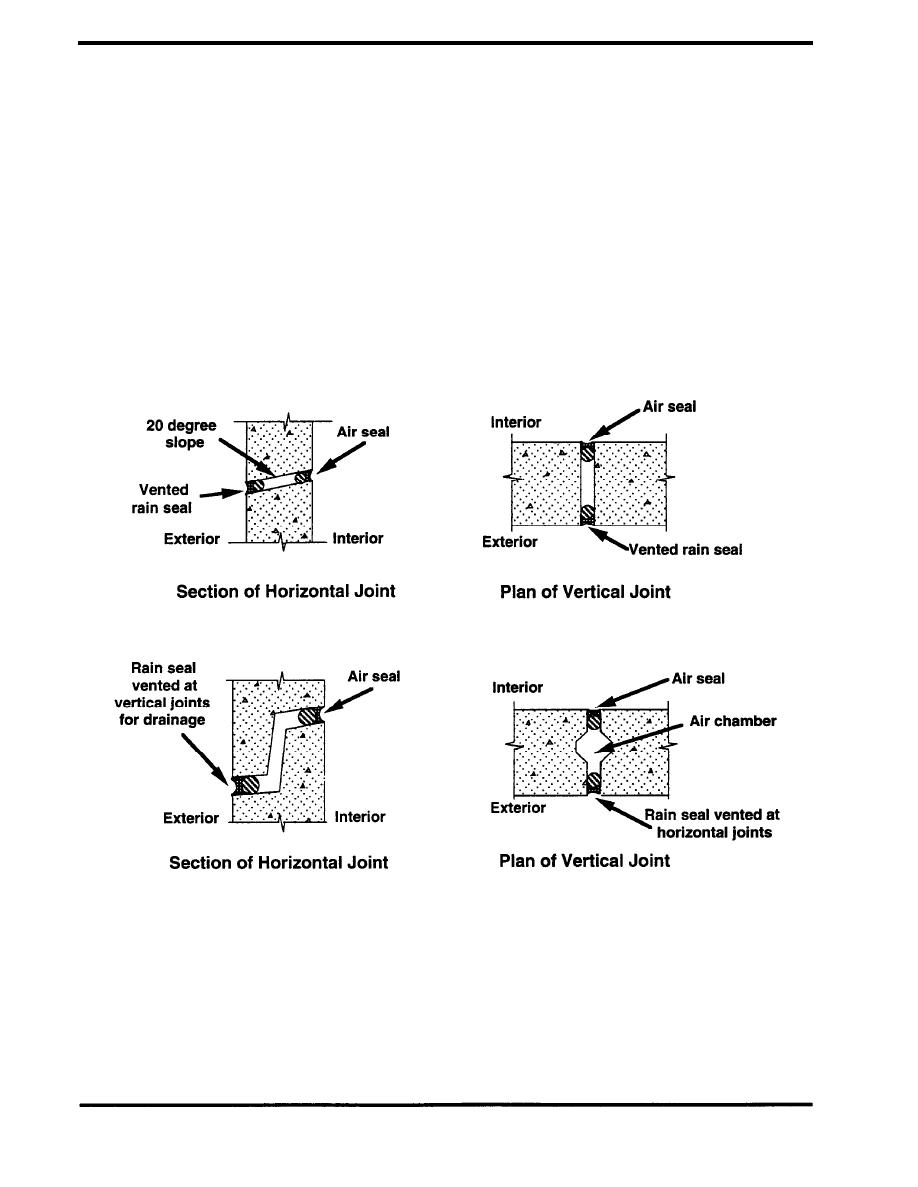
DESIGN/RAIN PENETRATION
The two-stage joint approach can be used in a pressure-equalized rain screen joint design to further
improve performance. In this approach, vents are purposely provided in the rain seal and a
pressure equalization chamber is provided between the rain and air seals. The vents and the
chamber provide for rapid equalization of the outdoor air pressure and the chamber air pressure,
reducing the pressure-driven flow of water past the rain seal. Figure 3.4.3 shows two-stage,
pressure-equalized joints from Architectural Precast Concrete (PCI). These joints are sloped
downward to control gravity, wide enough to control capillary action and equipped with baffles of
some kind to control kinetic energy. For this joint system to work it is important that any water that
does penetrate the rain seal is drained to the outdoors and that good airtightness is achieved at the
air seal. A disadvantage of this approach is the higher initial cost compared to the face seal
approach, but lower maintenance costs and better performance can compensate. Achieving the
desired performance requires careful design and construction, including intensive supervision of the
work since inspection of the completed installation is difficult. The most common construction
errors in this approach are not sealing the air seal completely and making the rain seal airtight.
Figure 3.4.3 Two-Stage Pressure Equalized Joints
(PCI 1989)
PAGE 3.4-4



 Previous Page
Previous Page
